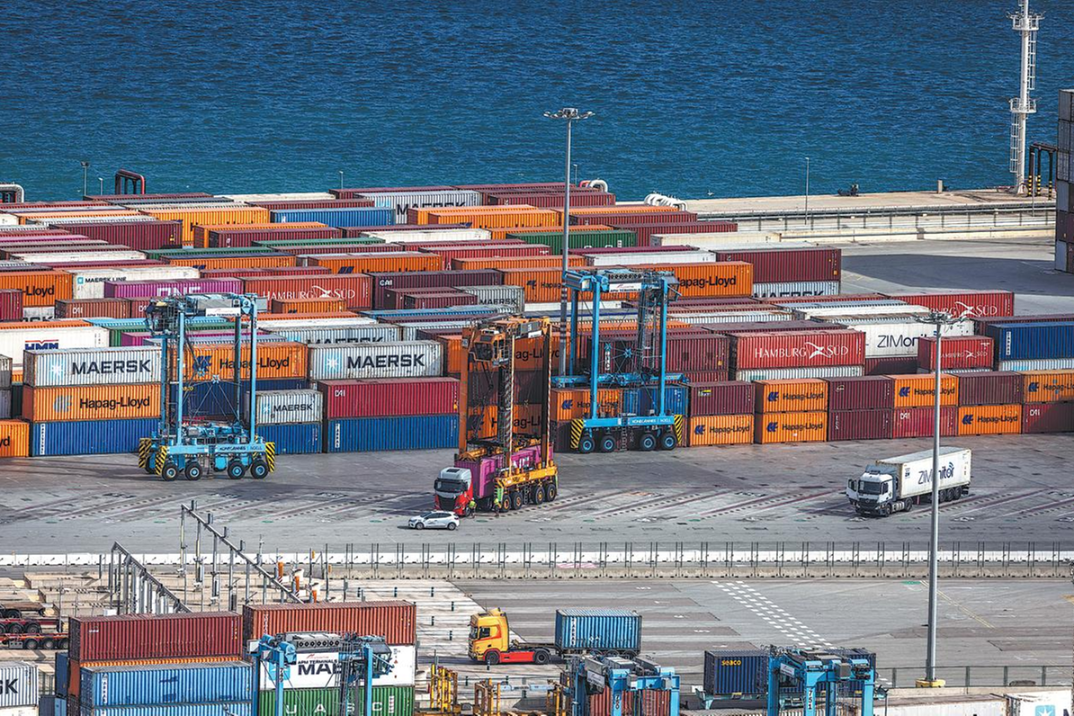New era of digital cooperation


WANG JUN/FOR CHINA DAILY
Thanks to the RCEP, China can strengthen dialogue on issues at the forefront of the framework and promote trade in the Asia-Pacific
As the private and public sectors constantly increase their investment in infrastructure construction and digital transformation projects in the Asia-Pacific region, the digital divide between regional economies has been narrowing and the networks for digital trade have taken shape, with great potential for further development. According to the International Telecommunication Union, 61 percent of the population in the Asia-Pacific region was using the internet in 2021, while mobile broadband coverage (3G or above) was available to 98 percent of the population and mobile broadband coverage (4G or above) to 96 percent of the population.
In the Asia-Pacific region, large-scale production and sales networks for digital trade, centered on China and the United States respectively, have come up. Regional economies carry out industry division at different links of the information and communication technology industry chain, becoming each other's important intermediate goods supplier and important market or emerging market for final consumer goods. By virtue of the implementation of mega regional trade agreements in the Asia-Pacific region, such as the Regional Comprehensive Economic Partnership, deeper regional economic integration will create more favorable conditions for the expansion of trade.
Furthermore, the Asia-Pacific region has the most vibrant digital economy in the world. In the Forbes ranking of the world's top digital companies in 2019, 79 were located in the Asia-Pacific region. The robust growth in the digital economy requires institutional coordination and cooperation on rules at the regional level. A large number of digital companies with varying comparative advantages are competing in the Asia-Pacific market. They are bound to raise more requirements on rules in a wider field and across a broader range, pressing ahead with regional cooperation on relevant rules.
With all these developments, cooperation on the digital economy and digital trade in the Asia-Pacific region still faces a number of challenges.
Economies are locking horns in emerging economic sectors, resulting in intensifying protectionism. Trade restrictive measures centered on all sorts of non-tariff barriers are increasing drastically, such as requests for local content requirements, local import substitution requirements, source code and encryption requirements, content and intellectual property supervision measures, and the entity list for export controls under the pretext of "national security". This has partly crippled regional cooperation in the digital economy.
China and the US are growing into the two most important pillars of the digital world. The US has been rapidly stepping up efforts to suppress China's digital economy by promoting exclusive digital economy blocs based on ideology. Such moves go against the common interests of Asia-Pacific economies. They will undermine the foundation of mutual trust in regional cooperation on the digital economy and trade, increase the production and consumption costs, and impede technological innovation, thus proving detrimental to the long-term sustainable and sound growth of the region's digital economy.
In contrast, the RCEP, which has taken effect for all 15 members, will play a positive role in advancing regional cooperation on the digital economy and digital trade. To start with, compared with other free trade pacts, inclusiveness is one of the most distinct features of the RCEP.
Covering about 30 percent of the world's population, the RCEP has the most diverse membership, including both developed nations and the least developed ones, both big economies such as China and Japan and smaller ones such as Laos and Cambodia. To accommodate such diverse membership, the RCEP's provisions on digital trade have prioritized development issues and the advancement of cooperation, which speaks volumes of its respect for and efforts to balance different economies' different needs in digital trade. This will fully motivate RCEP members to bolster cooperation on the digital economy and digital trade.
Second, the RCEP is a victory for an open region in a world facing rising protectionism.
By integrating and unifying complicated economic and trade rules in the region, the RCEP has prompted member countries to further broaden market access in such areas as goods trade, services trade and investment, and achieved gradual unification of rules of origin, customs procedures, inspection and quarantine, and technical standards. By doing so, the RCEP will promote the free flow of economic factors within the free trade bloc, strengthen the division of labor among member countries, expand and upgrade the regional consumer market, and promote the formation of the world's largest integrated market. The RCEP dividends will be gradually released in the years to come, providing a better, more stable and more transparent institutional environment for member countries' cooperation on the digital economy and trade and creating broader room for the development of regional digital companies.
Third, the RCEP's chapter dedicated to e-commerce will further improve the digital trade ecology for member countries.
The RCEP includes a set of plurilateral-commerce rules covering the widest area and the largest number of member countries in the Asia-Pacific region. It also marks the first time that China has made specific commitments on e-commerce rules.
The RCEP's e-commerce chapter includes key content about promoting the use of e-commerce and e-commerce cooperation, with important consensus reached on hot button issues such as cross-border data flows and data storage. Alongside the gradual implementation of the RCEP agreement, the business environment for the digital economy in the Asia-Pacific region will further improve, providing a legal basis and institutional guarantee for digital companies in the region to exploit the RCEP market and bolster digital economic and trade cooperation.
To promote regional cooperation on the digital economy and digital trade in the Asia-Pacific, China could prioritize work in the following four areas.
First, digital companies should grasp the opportunity and actively explore the RCEP digital market. In the meantime, the communication channel between the commerce authorities and digital companies must be kept open, so that the former listen to the latter's demands and suggestions on rules and standards. This will improve the legal services for Chinese digital companies going global and help protect their legitimate rights and interests overseas.
Second, China should treat bridging the digital divide as an important opportunity to seek or consolidate partners on digital cooperation to jointly address digital trade barriers.
Third, it is vital to advocate the building of a coordination mechanism for digital rules, standards and principles in the Asia-Pacific region. Pilot trials could be carried out on dispute settlement mechanisms and interoperability between different systems.
Last, on the basis of coordination and cooperation among all RCEP members, China could strengthen dialogue on issues at the forefront of digital rules under the RCEP framework. Breakthroughs could be made in practical operations on specific issues to accelerate regional cooperation on new rules.
The author is an assistant researcher with the Chinese Academy of International Trade and Economic Cooperation. The author contributed this article to China Watch, a think tank powered by China Daily.The views do not necessarily reflect those of China Daily.
Contact the editor at editor@chinawatch.cn.


































